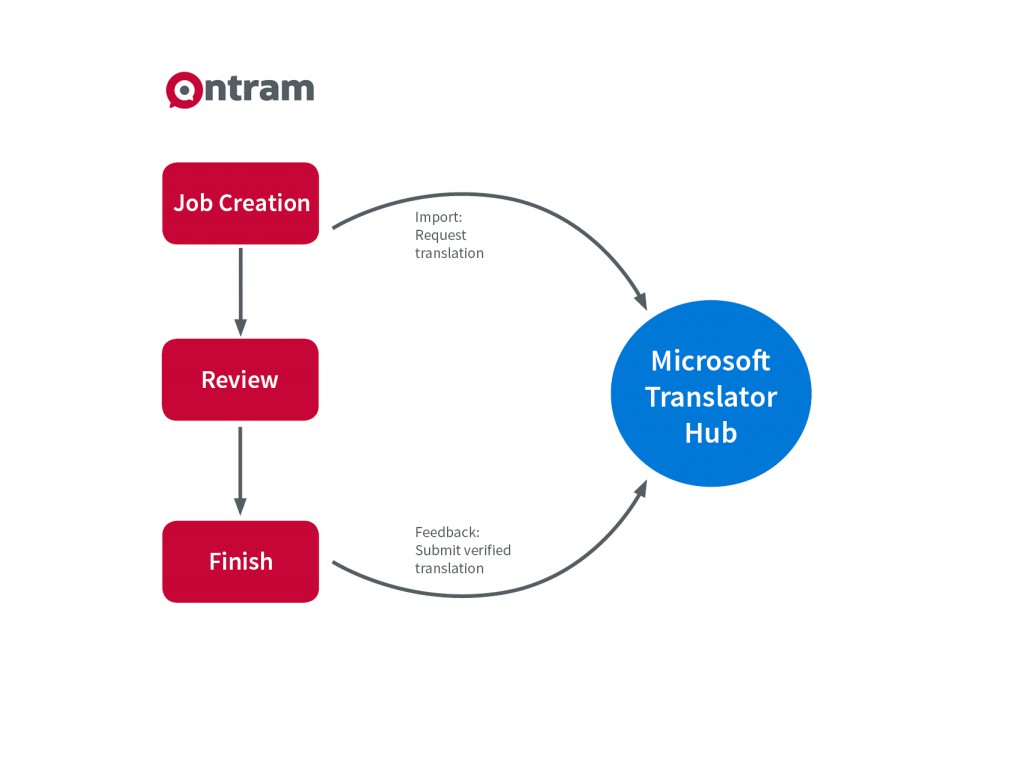Translation projects can be extremely time-consuming. Many project steps normally need to be done manually, and the co-ordination can become complicated and expensive.
To dramatically reduce throughput times of projects, Translation Management Systems support automation options, structured workflows, and reuse of existing translations. In addition to reducing organizational efforts, optimization of actual content is also possible. This is achieved with the integration of machine translation engines into the TMS.
Seamless Integration
This integration allows automatic pre-translations of to-be-translated documents. When setting up a translation project, the Machine Translation Engine automatically pre-translates text not yet in the translation memory. These pre-translated texts can now be adjusted and optimized by a translator where necessary.
These continual translation updates provide for a further reduction of manual workload.
 The example depicts the integration of Microsoft Translator Hub for machine pre-translation with ONTRAM. Additionally, many other machine translation tools are supported.
The example depicts the integration of Microsoft Translator Hub for machine pre-translation with ONTRAM. Additionally, many other machine translation tools are supported.
Reduced Effort with Increased Quality
In our example, the texts are pre-translated by the machine and marked with "MT". These texts are the starting point for the human translator. After job completion, the translated texts go back to the machine translation engine which learns from the results and continues improvements during the following translation projects. The manual translation workload is gradually reduced over time, and, at the same, results improve. This is one of the main objectives of machine translation integration.
Customers who have successfully integrated a machine translation engine into ONTRAM, on average save ca. 50% of translation efforts.
Our experts can advise you on the possibilities for integrating machine translation tools to your individual translation workflow.

